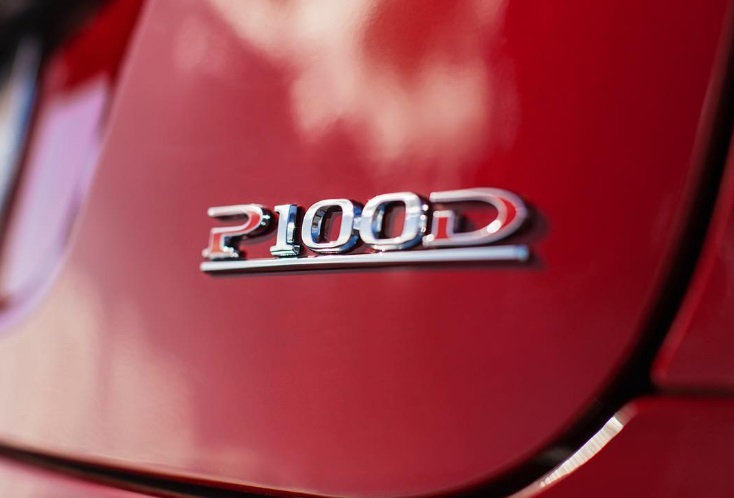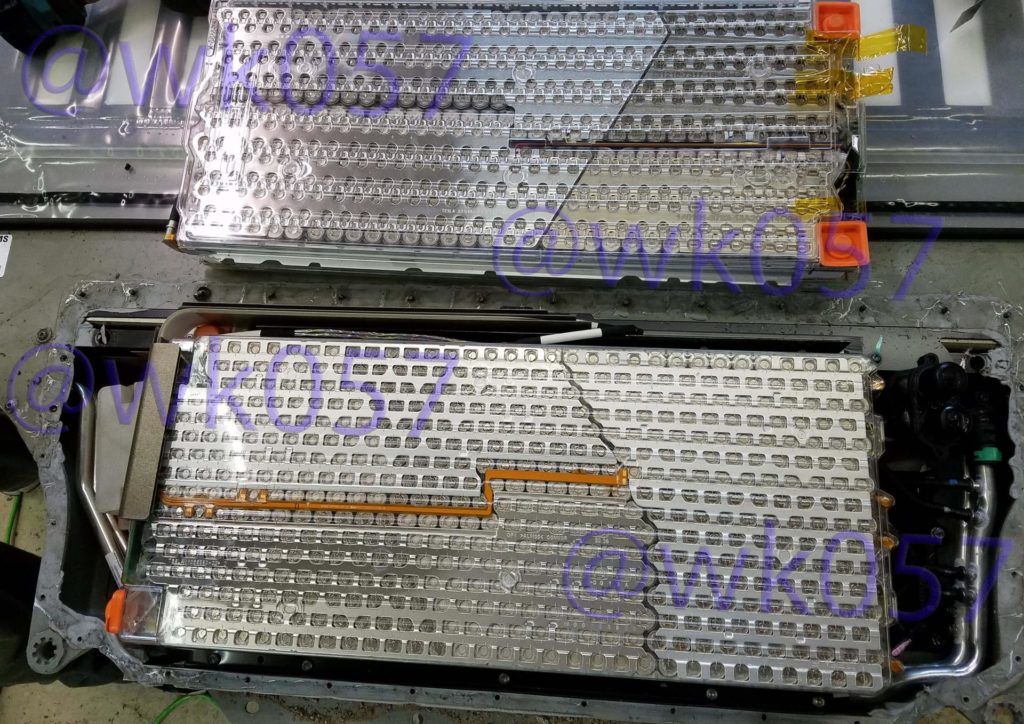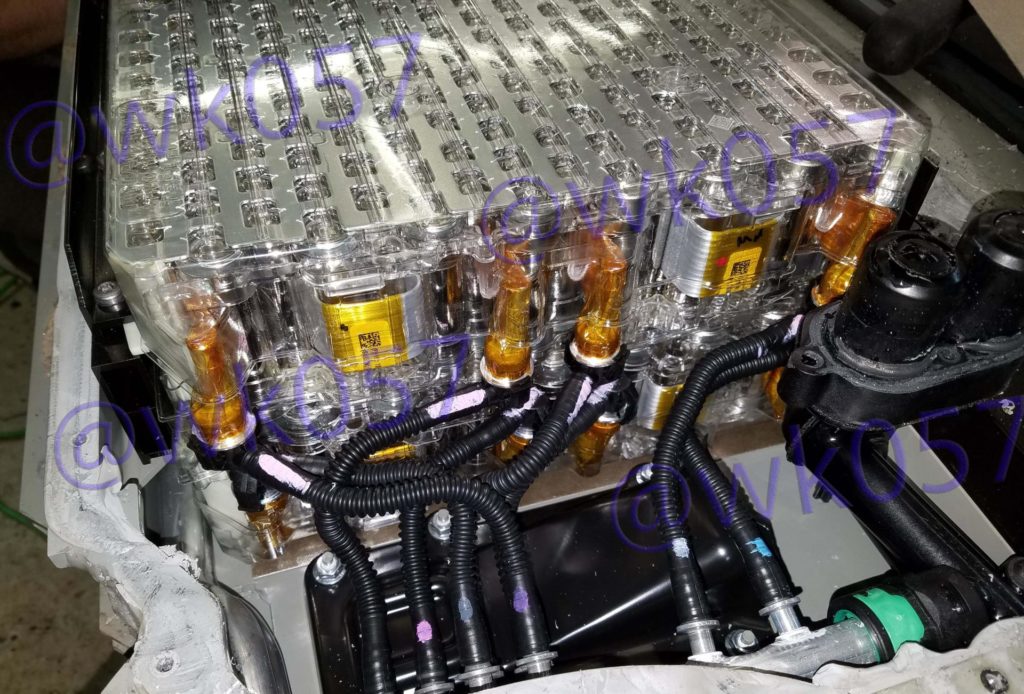News
An inside look at Tesla’s P100D battery pack: more cells, 102 kWh capacity, backwards compatibility in mind

New details of Tesla’s mysterious P100D battery pack, which Tesla CTO JB Straubel once described as having notable changes in battery module and pack technology, and a “complete redo on the cooling architecture”, have emerged thanks to Jason Hughes’s latest project.
Hughes posted photos of a dismantled 100 kWh battery pack, which he obtained through the purchase of a salvaged Tesla P100D, that reveal an increase in the number of 18650 lithium-ion cells being packed within each battery module. Hughes also discovered a surprising increase in battery capacity beyond 100 kWh, and what appears to be a replaceable connector that allows Tesla to retrofit older vehicles with the newer battery pack.
More 18650 Battery Cells
As outlined in Hughes’s blog post, Tesla was able to fit more of its cylindrical 18650 lithium-ion battery cells into each of the 16 modules making up the P100D battery pack. It’s worth noting that Tesla has maintained a relatively similar form factor on battery packs produced for Model S and Model X vehicles since their introduction. Regardless of the vehicle’s model version – be it a P85, a 60, 75D, or 90D – the uniform skateboard design of the battery pack allows for ease of production, as Tesla can manufacture a single-style pack that can be installed across its fleet of vehicles. Under that same notion, Tesla has also been able to create ‘unlockable features’ by software limiting vehicle range depending on the option purchased by the customer. In other words, Tesla installs the same battery pack into like-kind vehicles (e.g. Model S 60 uses the same pack as Model S 75).

Tesla P85 battery pack module vs. P100D module [Credit: Jason Hughes via @wk057]
Hughes’s dissection of the P100D battery shows that Tesla leveraged the same design concept by distributing a total of 8,256 battery cells across the 16 modules making up the battery pack, bringing total capacity up to the advertised 100 kWh number. However, and much to Hughes’s surprise – he had previously criticized Tesla for providing less battery capacity than what’s perceived by way of the vehicle’s nameplate – Tesla actually provided 102.4 kWh of capacity on the P100D pack, representing a 2.4% increase over what’s marketed.
Backwards Compatible Design
Tesla has also, seemingly, taken into account the ability to retrofit new battery packs onto older vehicles by using the same high and low-voltage connectors across packs. According to Hughes, “the pack itself has the same high-voltage connection, the same low voltages connectors, and the same cooling connector.” However, Hughes notes that there’s subtle changes on the P100D pack that would require a new part in order for it to be retrofittable onto non-P100D vehicles.
“The [P100D] pack has the newer ring around the high-voltage connector. So, it’s plug-and-play (for the most part, firmware and config changes needed) on the Model X and refreshed Model S, however it would require a different spacer ring on the high voltage connector. Tesla even has a part number for it, so it should be pretty simple to put into any Model S/X.” says Hughes.
What about that new P100D battery cooling architecture?
Well. It’s not magic. Tesla did improve battery cooling in the new P100D 100 kWh battery pack. And Tesla did provide a redone architecture, but it isn’t one of mythical proportions.
Hughes reveals Tesla’s approach to improve battery pack cooling was to use shorter and thinner cooling loops per battery module, thereby improving the rate of heat dissipation. Unlike most other electric car makers who do not “prime” their vehicle’s batteries through the use of a thermal management system, Tesla pumps fluid through the battery module to regulate the temperature of its battery pack in order to bring them to optimal operating temperatures. By ensuring the lithium-ion cells operate within ideal temperatures, Tesla is able to provide the best performance possible, while ensuring cell longevity.

Tesla P100D battery module cooling loops [Credit: Jason Hughes]

News
Tesla (TSLA) receives “Buy” rating and $551 PT from Canaccord Genuity
He also maintained a “Buy” rating for TSLA stock over the company’s improving long-term outlook, which is driven by autonomy and robotics.

Canaccord Genuity analyst George Gianarikas raised his Tesla (NASDAQ:TSLA) price target from $482 to $551. He also maintained a “Buy” rating for TSLA stock over the company’s improving long-term outlook, which is driven by autonomy and robotics.
The analyst’s updated note
Gianarikas lowered his 4Q25 delivery estimates but pointed to several positive factors in the Tesla story. He noted that EV adoption in emerging markets is gaining pace, and progress in FSD and the Robotaxi rollout in 2026 represent major upside drivers. Further progress in the Optimus program next year could also add more momentum for the electric vehicle maker.
“Overall, yes, 4Q25 delivery expectations are being revised lower. However, the reset in the US EV market is laying the groundwork for a more durable and attractive long-term demand environment.
“At the same time, EV penetration in emerging markets is accelerating, reinforcing Tesla’s potential multi‑year growth runway beyond the US. Global progress in FSD and the anticipated rollout of a larger robotaxi fleet in 2026 are increasingly important components of the Tesla equity story and could provide sentiment tailwinds,” the analyst wrote.
Tesla’s busy 2026
The upcoming year would be a busy one for Tesla, considering the company’s plans and targets. The autonomous two-seat Cybercab has been confirmed to start production sometime in Q2 2026, as per Elon Musk during the 2025 Annual Shareholder Meeting.
Apart from this, Tesla is also expected to unveil the next-generation Roadster on April 1, 2026. Tesla is also expected to start high-volume production of the Tesla Semi in Nevada next year.
Apart from vehicle launches, Tesla has expressed its intentions to significantly ramp the rollout of FSD to several regions worldwide, such as Europe. Plans are also underway to launch more Robotaxi networks in several more key areas across the United States.
News
Waymo sues Santa Monica over order to halt overnight charging sessions
In its complaint, Waymo argued that its self-driving cars’ operations do not constitute a public nuisance, and compliance with the city’s order would cause the company irreparable harm.

Waymo has filed a lawsuit against the City of Santa Monica in Los Angeles County Superior Court, seeking to block an order that requires the company to cease overnight charging at two facilities.
In its complaint, Waymo argued that its self-driving cars’ operations do not constitute a public nuisance, and compliance with the city’s order would cause the company irreparable harm.
Nuisance claims
As noted in a report from the Los Angeles Times, Waymo’s two charging sites at Euclid Street and Broadway have operated for about a year, supporting the company’s growing fleet with round-the-clock activity. Unfortunately, this has also resulted in residents in the area reportedly being unable to sleep due to incessant beeping from self-driving taxis that are moving in and out of the charging stations around the clock.
Frustrated residents have protested against the Waymos by blocking the vehicles’ paths, placing cones, and “stacking” cars to create backups. This has also resulted in multiple calls to the police.
Last month, the city issued an order to Waymo and its charging partner, Voltera, to cease overnight operations at the charging locations, stating that the self-driving vehicles’ activities at night were a public nuisance. A December 15 meeting yielded no agreement on mitigations like software rerouting. Waymo proposed changes, but the city reportedly insisted that nothing would satisfy the irate residents.
“We are disappointed that the City has chosen an adversarial path over a collaborative one. The City’s position has been to insist that no actions taken or proposed by Waymo would satisfy the complaining neighbors and therefore must be deemed insufficient,” a Waymo spokesperson stated.
Waymo pushes back
In its legal complaint, Waymo stated that its “activities at the Broadway Facilities do not constitute a public nuisance.” The company also noted that it “faces imminent and irreparable harm to its operations, employees, and customers” from the city’s order. The suit also stated that the city was fully aware that the Voltera charging sites would be operating around the clock to support Waymo’s self-driving taxis.
The company highlighted over one million trips in Santa Monica since launch, with more than 50,000 rides starting or ending there in November alone. Waymo also criticized the city for adopting a contentious strategy against businesses.
“The City of Santa Monica’s recent actions are inconsistent with its stated goal of attracting investment. At a time when the City faces a serious fiscal crisis, officials are choosing to obstruct properly permitted investment rather than fostering a ‘ready for business’ environment,” Waymo stated.
News
Tesla FSD v14.2.2 is getting rave reviews from drivers
So far, early testers have reported buttery-smooth drives with confident performance, even at night or on twisty roads.

Tesla Full Self-Driving (Supervised) v14.2.2 is receiving positive reviews from owners, with several drivers praising the build’s lack of hesitation during lane changes and its smoother decision-making, among others.
The update, which started rolling out on Monday, also adds features like dynamic arrival pin adjustment. So far, early testers have reported buttery-smooth drives with confident performance, even at night or on twisty roads.
Owners highlight major improvements
Longtime Tesla owner and FSD user @BLKMDL3 shared a detailed 10-hour impression of FSD v14.2.2, noting that the system exhibited “zero lane change hesitation” and “extremely refined” lane choices. He praised Mad Max mode’s performance, stellar parking in locations including ticket dispensers, and impressive canyon runs even in dark conditions.
Fellow FSD user Dan Burkland reported an hour of FSD v14.2.2’s nighttime driving with “zero hesitations” and “buttery smooth” confidence reminiscent of Robotaxi rides in areas such as Austin, Texas. Veteran FSD user Whole Mars Catalog also demonstrated voice navigation via Grok, while Tesla owner Devin Olsen completed a nearly two-hour drive with FSD v14.2.2 in heavy traffic and rain with strong performance.
Closer to unsupervised
FSD has been receiving rave reviews, even from Tesla’s competitors. Xpeng CEO He Xiaopeng, for one, offered fresh praise for FSD v14.2 after visiting Silicon Valley. Following extended test drives of Tesla vehicles running the latest FSD software, He stated that the system has made major strides, reinforcing his view that Tesla’s approach to autonomy is indeed the proper path towards autonomy.
According to He, Tesla’s FSD has evolved from a smooth Level 2 advanced driver assistance system into what he described as a “near-Level 4” experience in terms of capabilities. While acknowledging that areas of improvement are still present, the Xpeng CEO stated that FSD’s current iteration significantly surpasses last year’s capabilities. He also reiterated his belief that Tesla’s strategy of using the same autonomous software and hardware architecture across private vehicles and robotaxis is the right long-term approach, as it would allow users to bypass intermediate autonomy stages and move closer to Level 4 functionality.









